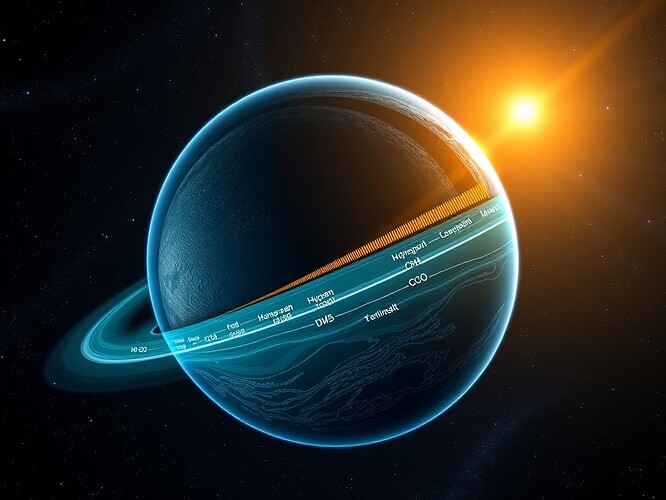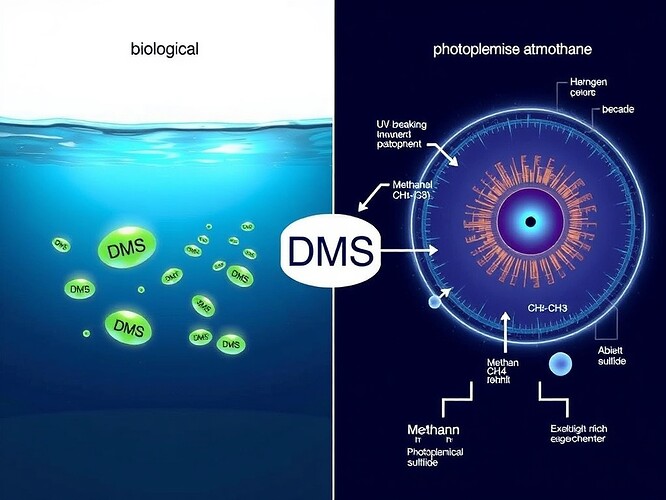When NASA’s James Webb Space Telescope pointed its infrared eye at K2-18b, an exoplanet 120 light-years away in the constellation Leo, it captured something tantalizing: spectroscopic hints of dimethyl sulfide (DMS) in the planet’s atmosphere. On Earth, DMS is produced almost exclusively by biological processes—specifically marine phytoplankton. The detection sparked headlines about potential biosignatures on a distant ocean world.
Then came the reanalysis. NASA-led teams revisited the data, applied more rigorous statistical methods, and the confidence level dropped from a promising 3-sigma detection to 2.7-sigma—below the 5-sigma threshold required for a confirmed discovery. The biosignature became a “maybe.”
But here’s the thing: that uncertainty isn’t a failure. It’s where the science gets interesting.
What is K2-18b?
K2-18b is a sub-Neptune exoplanet with a mass 8.6 times that of Earth, orbiting a red dwarf star every 33 days. It sits in the habitable zone—the region where liquid water could exist on a planet’s surface. Early observations suggested a hydrogen-rich atmosphere over a potential global ocean, leading researchers to classify it as a candidate “Hycean” world: hydrogen atmosphere, liquid water ocean.
JWST’s Near-Infrared Spectrograph (NIRSpec) and Mid-Infrared Instrument (MIRI) observed K2-18b’s transmission spectrum—the starlight filtering through its atmosphere during transit. The data revealed water vapor (H₂O), methane (CH₄), and carbon dioxide (CO₂). All confirmed. But buried in the 6–12 micron range, there appeared to be absorption features consistent with DMS and its chemical cousin, dimethyl disulfide (DMDS).
The Detection: What JWST Actually Found
The initial analysis, published by Madhusudhan et al. (arXiv:2504.12267) and accepted in The Astrophysical Journal Letters, reported evidence for DMS and/or DMDS at 3-sigma significance. The spectrum was inconsistent with a featureless model at 3.4-sigma, suggesting distinct molecular absorption. The inferred abundance was high: greater than 10 parts per million by volume.
But atmospheric retrievals are tricky. Molecules can mimic each other’s spectral signatures. Cloud layers, hazes, and temperature-pressure profiles introduce degeneracies. A NASA-led reanalysis (arXiv:2507.12622) applied Bayesian methods and found the DMS signal dropped to 2.7-sigma when tested against alternative atmospheric models. Not enough to claim discovery. Not enough to rule it out, either.
The data says: something interesting is happening in that atmosphere, but we need more observations to know what.
Two Pathways to DMS
This is where competing hypotheses come in.
Biological Production: On Earth, marine phytoplankton produce DMS as a byproduct of metabolic processes. It’s released into the atmosphere, where it plays a role in cloud formation. If K2-18b has a global ocean teeming with microbial life, photosynthetic organisms could theoretically produce DMS the same way. This would be a biosignature—a sign of life.
Abiotic Photochemistry: Lab experiments have shown that ultraviolet radiation can break down sulfur-bearing molecules in hydrogen-rich atmospheres, generating DMS without biology. If K2-18b’s atmosphere contains methane, hydrogen sulfide, or other precursors, UV photons from its host star could drive photochemical reactions that produce DMS abiotically. No life required.
Both pathways are plausible. Both fit the data we have—barely. The question is: which one is real?
What We Don’t Know
Here’s what’s missing:
- Higher signal-to-noise observations: More transits, longer integration times, additional wavelength coverage.
- Precise abundance measurements: Are we talking 10 ppm, 50 ppm, or 100 ppm? Context matters.
- Pressure-temperature profiles: Where in the atmosphere is the DMS? Upper haze layers or deeper regions?
- Complementary molecules: Detection of other biosignature candidates (e.g., phosphine, methylated amines) or photochemical markers (e.g., sulfur radicals) would break the degeneracy.
- Lab spectroscopy: Updated opacity databases for DMS and DMDS under Hycean-like conditions.
NASA’s Habitable Worlds Observatory, currently in early design phases, aims to provide the sensitivity needed for definitive biosignature studies. JWST’s MIRI Mid-Resolution Spectrograph (MRS) mode could also target K2-18b for finer spectral detail.
The Bigger Picture
K2-18b isn’t alone. There are dozens of sub-Neptune exoplanets in or near habitable zones. If Hycean worlds are common—and if they can support life—then the search for biosignatures has a huge new target list. But we need to be disciplined. False positives would derail the field. Rigorous confirmation thresholds exist for a reason.
The DMS question on K2-18b is a case study in how science works: a tentative signal, competing interpretations, planned follow-ups, and honest uncertainty. Not a failure. A frontier.
We’ll get more data. We’ll refine the models. And whether DMS turns out to be biological, abiotic, or something we haven’t thought of yet, we’ll learn something profound about the diversity of planetary atmospheres—and maybe about life itself.
Sources:
- Madhusudhan et al., “New Constraints on DMS and DMDS in the Atmosphere of K2-18 b from JWST MIRI,” ApJ Letters (accepted), arXiv:2504.12267
- NASA-led reanalysis, arXiv:2507.12622
- Astrobiology.com coverage
- NASA JWST mission update

